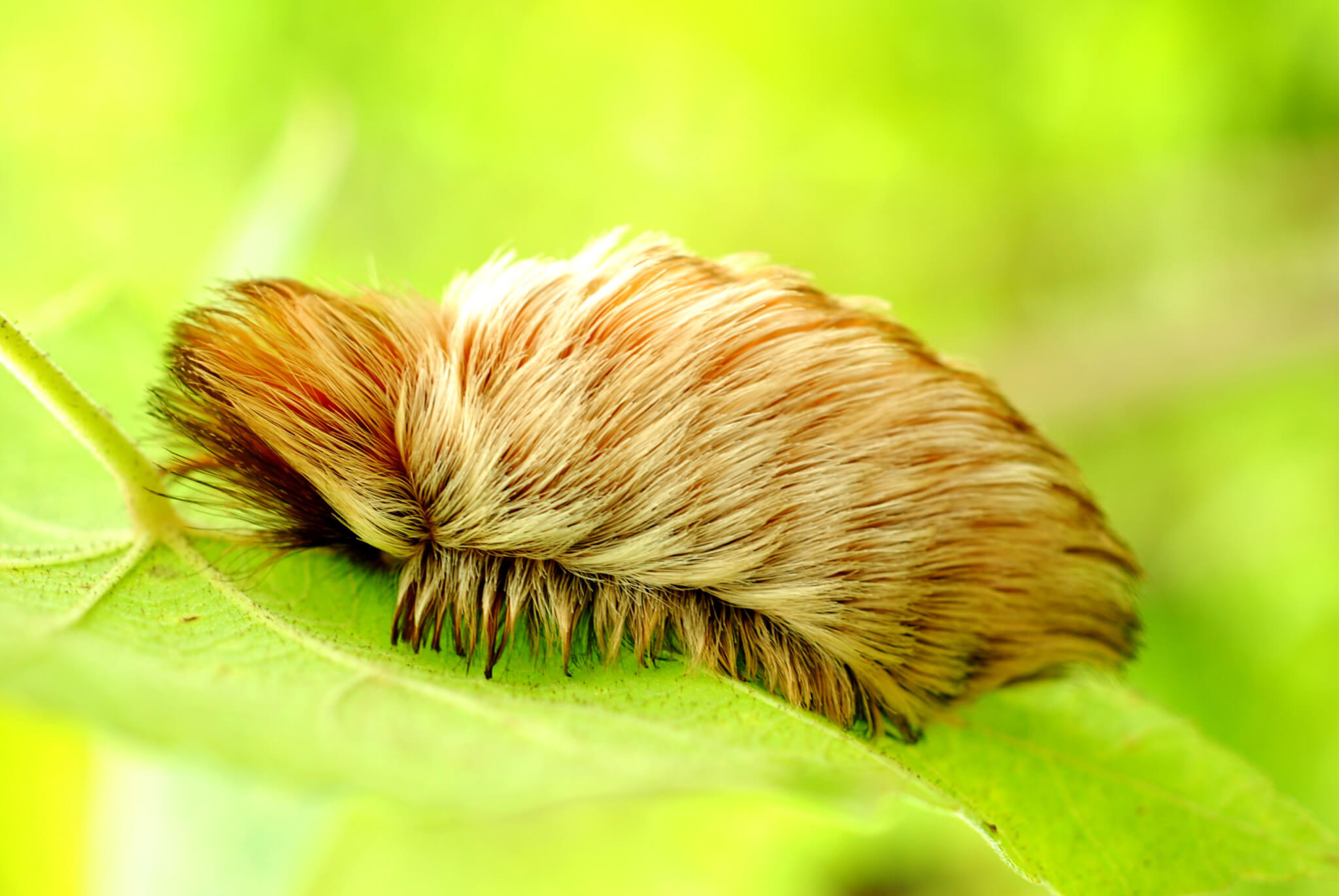
A look at the furry "puss caterpillar", which has started showing up in eastern Virginia.
Are they dangerous? Here’s what you need to know about Virginia’s furry caterpillars.
BLACKSBURG- This fall, you might see some tiny, toupee-like creatures crawling around trees or shrubs. But these are no hairpieces. They’re actually furry caterpillars that pack a powerful punch. In fact, they’re one of the most venomous species of caterpillars in North America. Insect experts warn Virginians to avoid touching these bugs at all costs.
“#SocialDistance away from this caterpillar,” said the Virginia Department of Forestry in a Facebook post.
Officials call this furry creature a “puss caterpillar”, named after its faint resemblance to a cat. And even though it looks soft, touching its spines can cause some pretty unpleasant side effects, including nausea, vomiting, swelling and itching. So where do you find these creatures? The department has reported most sightings of these hairy caterpillars occur in the eastern part of the state.
This isn’t Virginia’s first bout of bizarre bug sightings this year. Earlier in June, the state saw a race of cicadas emerge after spending 17 years underground. However, while the cicadas arrived right on time, experts aren’t quite sure why the puss caterpillars are showing up in such large numbers.
Where did they come from?
The puss caterpillars are not newcomers to Virginia. In fact, the bug is very common in several Southern states, including Florida, Texas and Arkansas. But, there has been a recent uptick in puss caterpillar sightings in parts of the state.
“It’s a native species. And its usually around in low numbers. But in 2020, those numbers seem to be a little bit up,” said Eric Day, the manager of Virginia Tech’s Insect ID Lab.
Usually, you can find these caterpillars in oak, elm, hackberry, plum, and sycamore trees. Currently, the caterpillars are getting ready to “pupate” or turn into moths. Once, they’ve matured, they’ll transform into the equally as fluffy but not as venomous southern flannel moths.
“It’s not an invasive species, it’s not a threat to the forest,” said Michelle Stoll, the Director of Public Information for the VDF. “But it’s weird looking. And it does hurt if you touch it.”
What happens if you touch one?
“The caterpillar is covered with fine, brown hairs. Each one hair is attached to a poison gland. So when you brush into it, it releases the poison,” said Day. “However the reaction is variable.”
People that touch a puss caterpillar can experience minor symptoms, like a tickling sensation, or more severe reactions like burning or developing blisters. Symptoms could last anywhere from a few minutes to a couple of days.
A woman in Richmond described the pain as a scorching-hot knife passing through the outside of her calf, according to the Daily Progress. Even Day himself has experienced a painful blisters for a few days after accidentally brushing up against one. But, the results of touching a puss caterpillar vary from person to person. Things like age and skin sensitivity can effect how long and strong your symptoms are.
Unfortunately, unlike most venomous caterpillars, these fuzzy little creatures don’t have bright “warning colors” that make them easy to spot.
“The thing about the puss caterpillar, it doesn’t have the “warning” coloration that other stinging caterpillars have,” said Day. “Most stinging caterpillars have bright, contrasting colors.” But, the puss caterpillar usually comes in muted colors like brown, yellow and tan. This could make it relatively hard to see amongst dirt or shrubs.
If you are stung by a caterpillar, health professionals suggest putting medical tape on the site to remove the spines. They also recommend washing the site with soap and water. But, if you have a severe reaction, see a doctor.
Leave them alone and they’ll leave you alone
However, a good thing about these stinging caterpillars is that they’re relatively harmless. If you don’t bother them, they’ll leave you alone. While they do sting, it’s important not to kill these caterpillars if you see one. Instead, the VDF recommends letting nature run its course.
“If you find the caterpillar, leave it alone and let its natural enemies control their populations,” said the VDF in a Facebook Post. “There are a number of other insects that will prey on them at different stages of their life cycle.”
Arianna Coghill reports for Dogwood. She can be reached at [email protected].
Politics

It’s official: Your boss has to give you time off to recover from childbirth or get an abortion
Originally published by The 19th In what could be a groundbreaking shift in American workplaces, most employees across the country will now have...

Trump says he’s pro-worker. His record says otherwise.
During his time on the campaign trail, Donald Trump has sought to refashion his record and image as being a pro-worker candidate—one that wants to...
Local News

Virginia verses: Celebrating 5 poetic icons for National Poetry Month
There’s no shortage of great writers when it comes to our commonwealth. From the haunting verses of Edgar Allan Poe, who found solace in Richmond's...

Join the fun: Recapping Family Literacy Night’s storybook adventures
When’s the last time you read a book aloud with a loved one? If it’s difficult to answer that question, then maybe it’s time to dust off that TBR...




